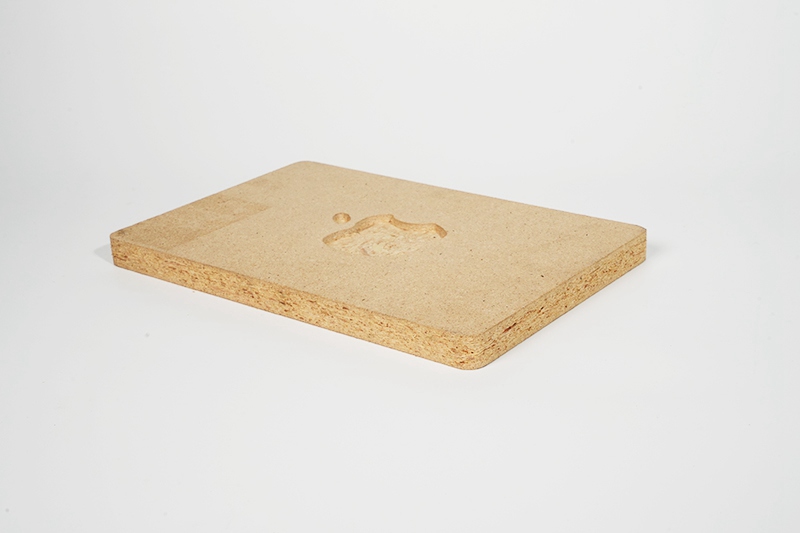Can OSB Board Be Used Outside?
OSB (oriented strand board) is one of the most versatile engineered wood materials in construction and furniture manufacturing. Known for its strength, uniformity, and cost-efficiency, OSB is made by compressing wood strands with waterproof resins under high heat and pressure. However, when considering outdoor applications, there are specific factors to evaluate — including moisture resistance, coating, and installation environment. Let’s explore whether OSB can be effectively used outside and how to make it last.

1. Understanding OSB and Its Structure
OSB consists of multiple layers of wood strands oriented in cross directions, bonded with adhesive resin and wax.
This composition provides:
High structural strength.
Dimensional stability under load.
Resistance to warping compared with plywood.
However, OSB’s edges and surface fibers can absorb moisture if left unprotected, which may lead to swelling or delamination when used outdoors. Therefore, not all OSB Boards are suitable for exterior exposure.
2. OSB Grades and Their Outdoor Suitability
OSB boards are classified according to the EN 300 standard (European Norm) based on their resistance to moisture and structural strength:
| OSB Type | Description | Outdoor Suitability |
|---|---|---|
| OSB/1 | For dry, non-structural indoor use (e.g., furniture panels, wall coverings). | Not suitable for outdoor use. |
| OSB/2 | Structural use in dry conditions. | Indoor only. |
| OSB/3 | Structural use in humid conditions; water-resistant adhesive used. | Suitable for limited exterior use with sealing or coating. |
| OSB/4 | High-strength structural use under heavy load and humid conditions. | Recommended for outdoor or semi-exposed applications. |
For any long-term outdoor project, OSB/3 or OSB/4 should be chosen. These types are manufactured with phenol-formaldehyde resins, offering greater waterproofing and stability against temperature changes.
3. How to Protect OSB Board Outdoors
Even water-resistant OSB grades need additional protection when exposed to weather. The following methods can extend their service life outdoors:
a) Apply Waterproof Coatings
Seal all exposed surfaces and edges using:
Acrylic or polyurethane paint – forms a waterproof film.
Outdoor-grade varnish – adds UV protection and moisture resistance.
Bitumen-based sealant or epoxy coating – ideal for extreme weather exposure.
Ensure the coating penetrates edges and screw holes, as these are the most vulnerable to water absorption.
b) Use Exterior Sealant or Primer
Before painting, use a wood primer or sealant to fill pores and prevent moisture penetration. Apply at least two coats and allow full drying between applications.
c) Install with Proper Ventilation
Avoid direct ground contact. When used outdoors, OSB panels should be elevated on a frame to allow airflow beneath and prevent condensation damage.
d) Protect with Cladding or Overhang
For outdoor walls or sheds, OSB should be covered with siding, weatherboards, or waterproof membranes. This physical barrier prevents prolonged moisture contact and sunlight exposure.
4. Common Outdoor Uses for OSB Board
When properly treated, OSB can perform well in semi-exterior environments or protected outdoor structures, such as:
Roof sheathing and underlayment – beneath shingles or waterproof membranes.
Exterior wall sheathing – behind weather-resistant cladding.
Garden sheds and storage enclosures – when sealed or painted.
Temporary outdoor structures – exhibition booths or event stages.
For these applications, OSB provides reliable strength and stability while maintaining cost efficiency.
5. Limitations of Using OSB Outside
Despite its versatility, OSB has limitations compared with marine plywood or pressure-treated wood.
Direct water exposure: Prolonged contact with standing water can lead to swelling or edge delamination.
UV sensitivity: Uncoated OSB fades or becomes brittle when exposed to sunlight.
Surface texture: The porous surface requires more preparation for paint or finishing.
Temperature extremes: Continuous freeze-thaw cycles may cause microcracks in coatings if not properly maintained.
For permanent outdoor installations, OSB should always be sealed, protected, and periodically inspected.
6. Maintenance Tips for Outdoor OSB
Proper care ensures OSB’s durability even in semi-exposed environments.
Reapply coatings every 12–18 months, especially after heavy rainfall seasons.
Inspect joints and edges for cracks or unsealed spots.
Clean surfaces regularly to prevent mold growth and surface discoloration.
Avoid soil contact — always install on a raised platform or frame.
When maintained correctly, OSB can last for many years outdoors without losing strength or shape.
Conclusion
Yes — OSB board can be used outside, but only if it’s the right grade and properly protected. OSB/3 and OSB/4 boards with waterproof coatings, sealants, and suitable installation methods perform well in outdoor or semi-exposed conditions.
By combining the correct material selection, edge sealing, painting, and maintenance, OSB becomes a practical and durable choice for exterior projects such as sheds, roofing, and wall sheathing. With the right preparation, it delivers both strength and cost-efficiency — even under challenging outdoor environments.
Previous: How Is OSB Board Made?

